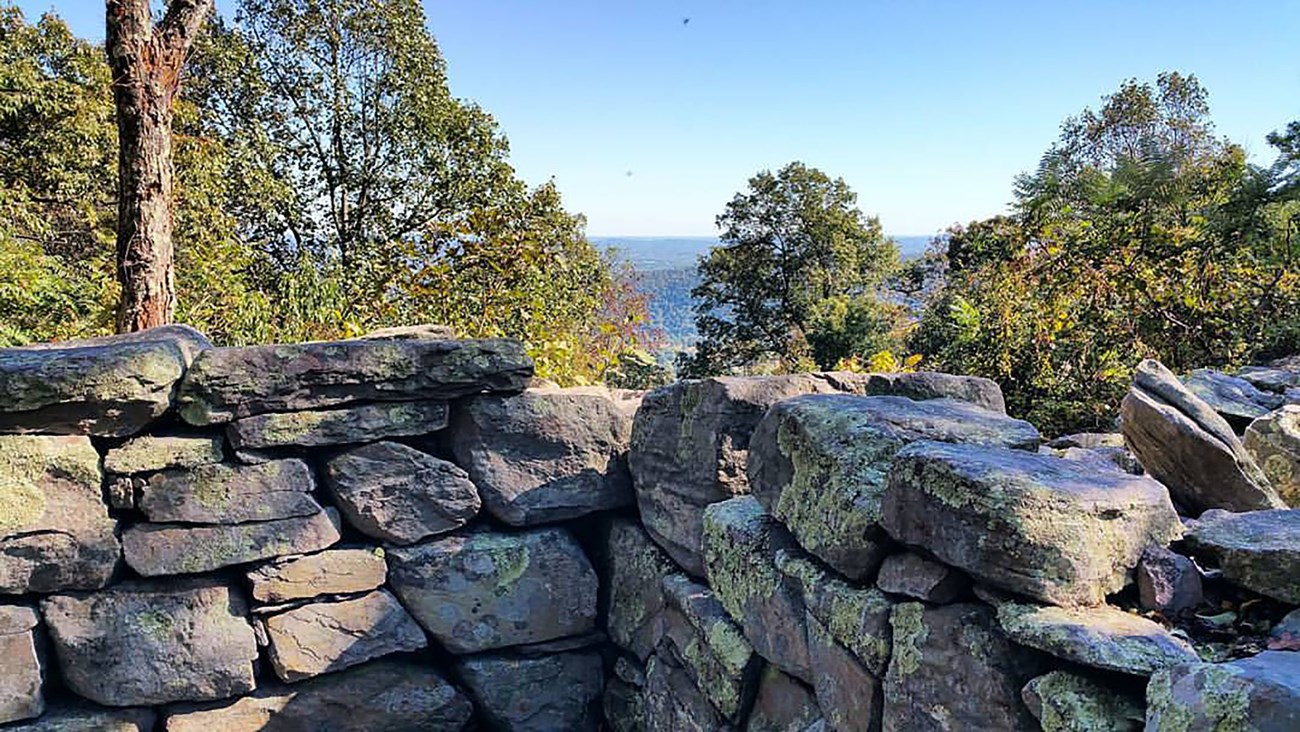
NPS Maryland Heights is the highest mountain overlooking Harpers Ferry. Its southern face is a 300-foot vertical cliff that towers over the Potomac River, the Baltimore & Ohio Railroad and the Chesapeake and Ohio Canal. The mountain is steep, rugged, and primitive - with a thick veneer of Civil War history. Maryland Heights hosted the first battle between Union and Confederate troops in Maryland. The first combat on Northern soil between the two armies occurred on Maryland Heights. Maryland Heights was the most important strategic target of the Confederate army in the Battle of Harpers Ferry (September 12-15, 1862). Without the seizure of Maryland Heights, Robert E. Lee's Southerners could not entrap the Union garrison and complete Lee's assignment outlined in Special Orders 191. Lee selected Maj. Gen. Lafayette McLaws to lead the advance upon Maryland Heights, expecting McLaws to snare the Federal garrison from the north. McLaws arrived at the eastern base of the mountain on September 12 with 8,000 men. Discovering nearly 4,000 U.S. soldiers stationed atop the mountain, McLaws directed the Mississippi brigade of William Barksdale and Joseph Kershaw's South Carolina brigade to ascend Elk Ridge north of Maryland Heights and to take the Union position. Battle raged on Maryland Heights from 6:30 a.m. to 3:30 p.m. on September 13, and eventually, the Federals under Colonel Thomas H. Ford abandoned the position. The loss of Maryland Heights cut off Federal escape routes and helped lead to the surrender of the U.S. garrison on September 15. The significance of Maryland Heights is further attested by the U.S. occupation of the mountain two days following the Battle of Antietam. By securing the heights on September 19, the Federals once again occupied Harpers Ferry. To ensure the protection of the position, Maj. Gen. George B. McClellan ordered that extensive fortifications be constructed on Maryland Heights. U.S. engineers quickly surveyed the terrain, and during the fall of 1862, work commenced on the Stone Fort and the 30-pounder Battery, along with improvements at the Naval Battery. Ten months later, as General Lee threatened Harpers Ferry with his second invasion of the North (Gettysburg), construction hastened, resulting in the Interior Fort, the Exterior Fort, and the 100-pounder Battery. This latter battery boasted a 100-pounder Parrott Rifle that could hurl a 100-pound shell more than two miles. The tube of this cannon weighed nearly 10 tons. The fortifications of Maryland Heights played a major role in the Confederacy's third and final invasion of the North. Confederate Maj. Gen. Jubal Early spent four days attempting to maneuver the Federals out of the forts, but he failed. The time Early spent worrying about Maryland Heights enabled the U.S. to send reinforcements to Washington, ultimately helping to save the U.S. capital. The Union army occupied the forts of Maryland Heights until June 30, 1865. The final time the big cannon boomed was in memory of President Lincoln following his assassination. Though Maryland Heights was occupied most of the war by U.S. forces, an irony is its first occupation was by Confederates. Col. Thomas Jonathan Jackson seized the mountain in May, 1861, while commandant at Harpers Ferry. Recognizing the strategic value of the high ground, Jackson determined he could not defend Harpers Ferry without holding Maryland Heights. Jackson's aggressiveness created one of the first "international" incidents for the fledgling Confederacy, as he positioned troops in neutral Maryland - a state the Confederacy was wooing. Despite the political firestorm set off by Jackson, he refused to abandon the position. The Confederates left on their own volition on June 14, 1861, when the Southerners abandoned Harpers Ferry five weeks before the First Battle of Manassas. |
Last updated: May 3, 2022
